Mastering the art of preservation
A new guide takes you through the forgotten skills of food preservation, writes <b>Kirsten Lawson</b>.
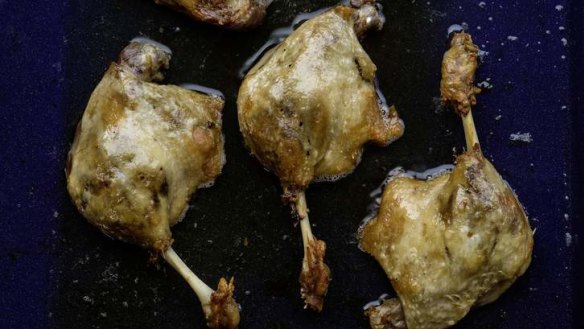
Preserving is where home cooks are headed as we attempt to re-create those hazily remembered childhood days when grandma still stocked the cupboard with jars of stuff made from the summer and autumn harvest.
Home-cured meats, though, would never have been the norm other than in the homes of Italian immigrants, but now, even they are the skill du jour for the modern home cook. Add to that the rush to ferment, now considered a foundation stone to good health, and the sourdough starters in the fridges of so many homes, and the first steps at home cheesemaking, and you have a petri dish of yeasts and bacteria and moulds bubbling away in the nation's kitchens.
Recently in these pages, Matthew Evans shared recipes for making your own feta and pancetta, butter and smoked fish. But if you're serious about learning these forgotten skills, and if you're starting in this world as a grown-up without the learning that would once have been passed through generations, you probably want to learn some background. Just in case.
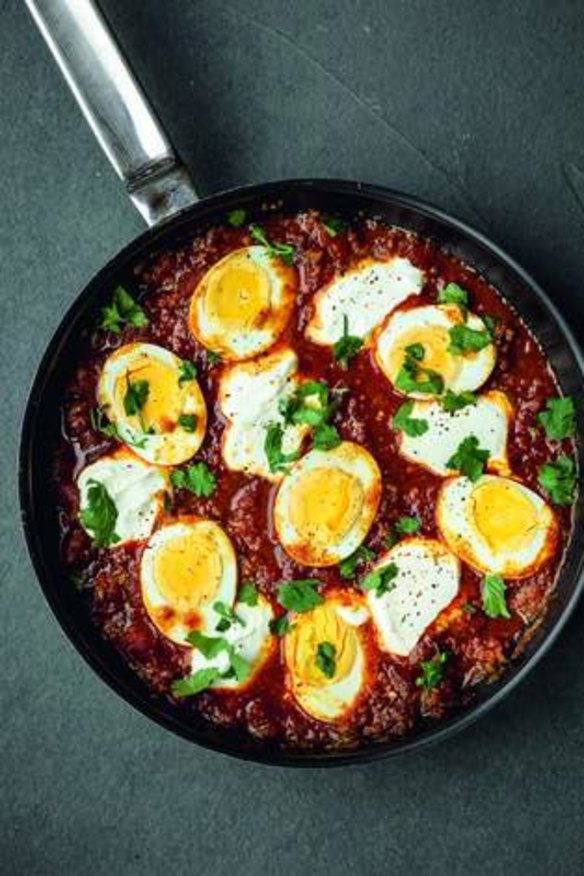
One place to start could be The Gentle Art of Preserving, a new book by London restaurateurs and cooking teachers Katie and Giancarlo Caldesi. It's comprehensive, covering vinegar-based preserves like chutney, smoking and salting food to preserve it, fermenting, salt cures, preserving in oil and alcohol, using sugar, and drying foods.
The most reassuring thing about this book is that Katie Caldesi doesn't brush off issues of food safety lightly. She tackles them head on. The four spoilers, she says, are enzymes, moulds, yeasts and bacteria. Yeasts cause fermenting, which you want sometimes but not usually. Mould thrives in acid (which is why you get it on yoghurt and tomatoes), so vinegar is no protection against it.
Bacteria is hard to destroy - salmonella is destroyed when you heat to 60C and hold it for a time, botulism spores at 115C for a period, but as water boils at 100C (lower above sea level) boiling isn't enough. Only a pressure canner can do the job. Enzymes are inhibited by temperatures above 140C.
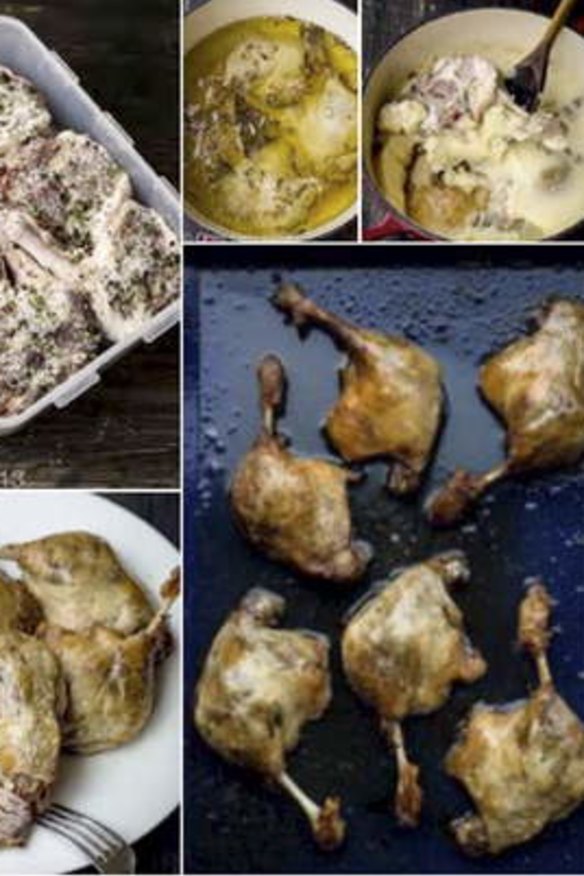
Caldesi says trust your instincts. If you see mould, discard the entire jar of jam, chutney or preserves - mould mycotoxins can go in deep. If something smells unpleasant or off, throw it away. Do the same if it fizzes when you unscrew the lid, even if it looks and smells normal. If you're curing meat, wipe white moulds off regularly with vinegar or a strong spirit such as grappa. Clean off mould with a toothbrush before eating. If you get green mould, it's wise to throw the meat away, and as for slimy grey, yellow, orange or red moulds, out it goes immediately.
Always use fresh and undamaged fruit and vegetables, she says. If you're using herbs, fruit or other flavourings in a preserve, bring it to the boil first. If you're preserving in oil, you need to be careful that there is enough acid to prevent bacteria - for low-acid vegetables, this means adding the right amount of the right vinegar - vinegars have different
acid content. The Caldesis say vegetables in oil should be made in small batches and kept in the fridge.
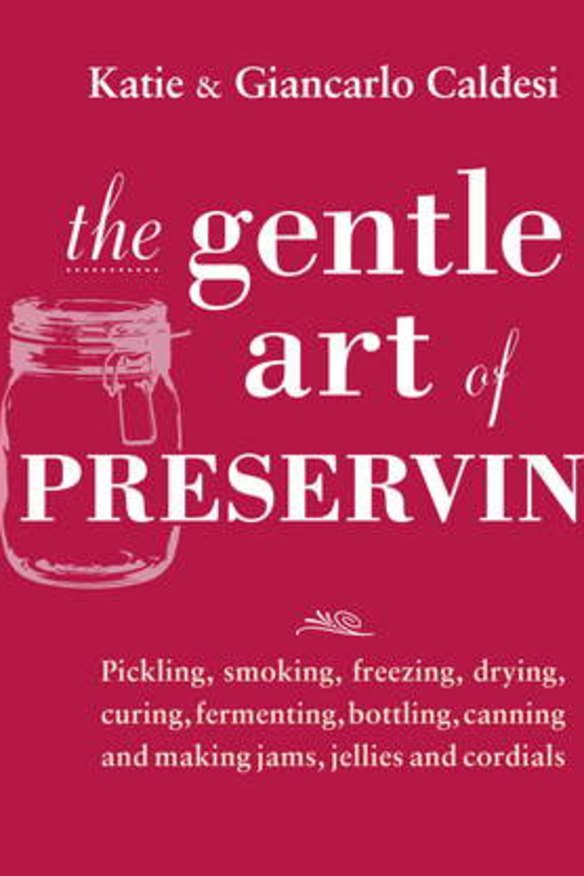
Keep jars in pristine condition. Scrape off old labels and glue. Use an oven (140C for 20 minutes) or boiling water (10 minutes at a boil) to sterilise them; don't rely on the dishwasher. Use new lids, and vinegar-proof lids if you're preserving in vinegar - chutneys, for example.
The Caldesis also tackle the vast subject of curing meat. Which means a discussion of nitrates and nitrites, used in the curing salts that have given deli meats a bad name.
Most health authorities advise you to avoid processed meats and red meat because of the link to bowel cancer, with nitrites suggested as a possible culprit, although the evidence doesn't seem firm on this.
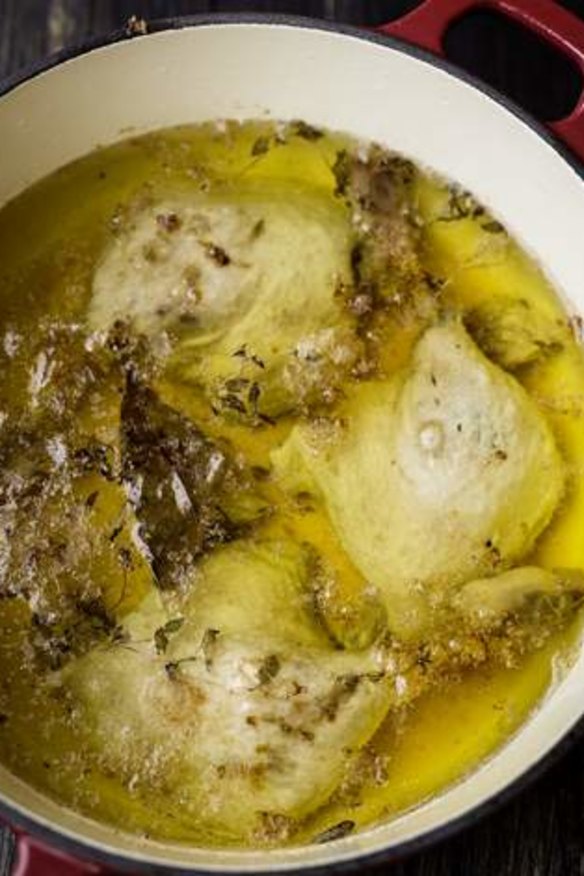
Caldesi says the amount of nitrites and nitrates in commercial curing is tightly controlled and is less than found naturally in many green leafy vegetables.
And she says when you're curing meat, the safest and most consistent route is to use curing salts. Curing salts are the only way of eliminating the risk of botulism.
You can avoid them (you will find low-nitrite and nitrite-free products at organic butchers now in Canberra), and Caldesi has recipes for products like bacon cured only with salt. But your cured meats won't last as long and are more likely to spoil. They also won't have the rosy-red colour of commercial cured meats.
This book has a fascinating section on drying foods, pretty much a core part of a raw food diet, under which adherents avoid cooking because of the way it destroys many enzymes, vitamins and nutrients. As well as fruit, vegetables, seeds and herbs, the Caldesis' book explains how to make crackers through blitzing ingredients into a paste then drying it in sheets.
They give a recipe for a Turkish soup made with a dried vegetable paste. Tomatoes, peppers, onions, chickpeas and herbs are blitzed and made into dough, with flour, yeast, yoghurt and olive oil. The dough is fermented in the fridge for up to 10 days (she says three is ideal), then you flatten it and dry it at 60C for six or eight hours. Once dried, you grate the flatbreads into crumbs and dry them again. These crumbs last up to a year in a jar and when you're ready to use them, you simply add water to rehydrate, heat and stir in some stock, and you have an instant soup.
>> <i>The Gentle Art of Preserving</i>, by Katie and Giancarlo Caldesi (Simon and Schuster, October 2013, $40).
Duck confit
Serves 4
This has become a staple dish we make at home for entertaining, a good dish to prepare in advance. We serve it with roast potatoes cooked in the fat from the duck and a jar of peas in sweet brine.
1 head of garlic, broken into cloves and peeled
1 tbsp juniper berries
1 tbsp crushed black peppercorns
1 tbsp fresh thyme leaves, plus a couple of sprigs
150g coarse sea salt
1 tbsp bay leaves, roughly chopped with scissors
4 duck legs
800g duck fat or goose fat or 1½ litres extra- virgin olive oil
Lightly crush three garlic cloves, the juniper berries, peppercorns and thyme leaves in a pestle and mortar. Add to the salt and bay leaves.
Lay the duck skin-side down in a ceramic or plastic container, preferably raised off the bottom (a plastic rack for this or a few chopsticks will do). Layer the duck legs with the salt and the flavourings between. Cover and place in the fridge for 12 hours.
Preheat the oven to 100C. Brush most of the salt off the duck and rinse very briefly to remove the rest. Thoroughly pat dry. Warm the duck fat or olive oil in a heavy ovenproof casserole. Add the thyme sprigs and the remaining garlic, lightly crushed.
Lay the duck skin-side up in the fat, making sure it is submerged. Cook for four hours or until a skewer slides into the meat with little or no resistance. It is a good idea to check the temperature as the fat should never go above 100C, and although small bubbles will appear it should never boil.
The duck can be eaten straight away, or stored completely submerged in the fat (don't pour in the liquid at the bottom, which you can use as a base for a stock or gravy). The duck will keep for up to a month in the fridge like this. If you eat one or two legs at a time keep the remaining legs covered in fat.
To reheat, put the duck legs into an ovenproof dish skin-side up and roast for 30-40 minutes at 180C, turning halfway through.
Milk kefir
Milk kefir is made with live kefir grains (available online or from health-food stores) - and is more nutritious than yoghurt. It is good for all of us, but particularly those with compromised immunity and bad gut health. It can be drunk on its own or mixed with fruit such as mango or date and vanilla seeds for smoothies. It can be used for any recipe that calls for yoghurt.
When you first receive your grains in their milk solution they will be hard to see, however, they are there! After the first brew they will have grown in size and quantity. If cared for correctly, you will have a lifetime supply of kefir grains.
Put about one heaped tablespoon of live or dried milk kefir grains into a clean glass jar (600ml or 1 litre). The quantity of grains doesn't matter; it will just take longer to ferment the milk with less. Fill the container two-thirds with raw or pasteurised milk. Cover with a clean tea towel and put it in a cupboard at room temperature out of direct sunlight for at least 24 hours (it can take 48-72 hours) or until it has separated and reached the desired sourness. Stir or rock occasionally.
As with many forms of fermentation, making kefir is not a precise science; many people find the kefir a little too sour once separation has occurred and prefer to bottle their kefir much faster. We use ours after just a day in the warmth of our kitchen. To serve, strain through a nylon sieve into a clean jar and transfer it to the fridge to chill.
Reuse the grains for another batch - they can be used indefinitely. If you want to make your kefir fizzy, place the strained liquor in a sealed bottle and leave at room temperature for one to two days.
Between batches, store the grains in a jar with milk, covered with a tight-fitting lid in the fridge; the low temperature will slow down the fermentation. Every week or two, change the milk and drink the kefir that you have made in your fridge.
Note: Keep kefir grains away from reactive metals.
Tomato kasundi
Makes 6 x 340ml jars
My favourite way to serve this Indian chutney is heated with halved boiled eggs, Greek yoghurt and a scattering of coriander.
3 kg ripe tomatoes
2 tbsp black mustard seeds
2 tbsp cumin seeds
200g fresh ginger, peeled
100g garlic, peeled
2-3 red chillies
1 tbsp turmeric powder
600ml malt vinegar
4 tbsp sunflower oil
1 tbsp salt
500g light brown sugar
Make a cross in the bottom of each tomato and remove the green core. Plunge into boiling water for 30 seconds to a minute, remove with a slotted spoon and plunge into very cold water. Peel off the skins, cut each tomato in half, scoop out the seeds and set aside.
Toast the mustard seeds and cumin seeds in a dry pan for three to four minutes until they start to pop and release their aroma. Tip them into a mortar and pestle and grind to a rough powder.
Place the ginger, garlic and chillies together in a food processor and blend to a coarse puree. Add the spices to the food processor along with about 200ml of the vinegar and blend again. Heat the sunflower oil in a heavy-based pan, scoop in the paste and fry for a few minutes to release the fragrance. Add the remaining vinegar with the salt and sugar followed by the tomatoes. Bring to the boil, stirring to dissolve the sugar, and then reduce the heat and simmer for about two hours, stirring to prevent it sticking on the bottom. The chutney is ready when it reaches the trail stage. Adjust the salt and chilli to taste before bottling into warm, sterilised jars. Once cold, seal with non-reactive lids and store in a cool, dark place for up to a year.
Restaurant reviews, news and the hottest openings served to your inbox.
Sign up